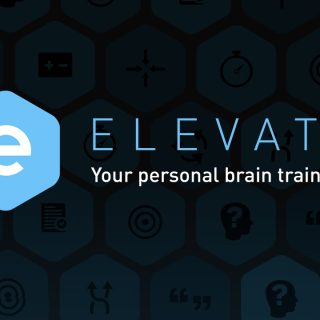Nurturing Minds: A Comprehensive Exploration of Student Mental Health in the Modern Educational Landscape
Introduction
In the bustling halls of educational institutions worldwide, a silent crisis often unfolds – the state of student mental health. The pressures of academics, social interactions, and personal expectations can weigh heavily on young minds, impacting their overall well-being and academic performance. This comprehensive article delves into the multifaceted realm of student mental health, examining its causes, consequences, and the strategies employed to address this critical issue. By exploring various aspects, from the stigmas surrounding mental health to the role of schools and communities, this article aims to shed light on the challenges faced by students and the holistic approaches needed to support their mental and emotional well-being.

I. Understanding Student Mental Health
A. The Prevalence of Mental Health Issues
Mental health issues among students have become increasingly prevalent. This section explores statistical data and research findings, providing an overview of the scope of the problem and the demographics most affected by mental health challenges.
B. Common Mental Health Disorders
From anxiety and depression to eating disorders and substance abuse, various mental health disorders can affect students. This part delves into these disorders, examining their symptoms, causes, and the impact they have on students’ daily lives and academic performance.

II. Causes and Triggers
A. Academic Pressures
The intense academic expectations placed on students can be a significant source of stress and anxiety. This segment explores the pressures students face, from standardized testing to college admissions, and their impact on mental health.
B. Social Pressures and Bullying
Social interactions and peer relationships play a pivotal role in a student’s life. This part discusses the impact of social pressures, including bullying and social media-induced stress, on the mental health of students, emphasizing the need for supportive social environments.
C. Family Dynamics and Home Environment
The family environment and dynamics at home can significantly influence a student’s mental health. This section examines the role of family support, parental expectations, and domestic challenges in shaping a student’s emotional well-being.

III. The Stigma Surrounding Mental Health
A. Societal Stigmas and Misconceptions
Mental health issues often carry a social stigma, hindering open discussions and preventing students from seeking help. This part explores common misconceptions about mental health and their impact on individuals, families, and communities.
B. Stigma in Educational Institutions
Educational institutions can sometimes perpetuate stigmas surrounding mental health. This section examines the stigma within schools and colleges, exploring how it affects students’ willingness to seek help and the efforts to create mental health-friendly campuses.

IV. Coping Mechanisms and Support Strategies
A. Counseling and Therapy Services
Schools and colleges have started to recognize the importance of counseling and therapy services. This part discusses the role of school counselors, psychologists, and therapy programs in supporting students’ mental health and providing necessary interventions.
B. Peer Support and Mentorship Programs
Peer support and mentorship programs can create a sense of belonging and understanding among students. This section explores the impact of peer-led initiatives, support groups, and mentorship programs in fostering a supportive community within educational institutions.
C. Mindfulness and Stress Reduction Techniques
Mindfulness practices, meditation, and stress reduction techniques have gained prominence as effective tools for managing mental health. This part explores their implementation in educational settings, discussing their benefits and the science behind their efficacy.
D. Collaborative Efforts: Schools, Families, and Communities
Addressing student mental health requires collaborative efforts between schools, families, and communities. This section examines successful initiatives and community-based programs that have made a positive impact, emphasizing the importance of a holistic approach in supporting students’ mental well-being.
V. Prevention and Early Intervention
A. Mental Health Education and Awareness
Educating students, teachers, and parents about mental health is crucial in breaking down barriers and fostering a supportive environment. This part discusses the importance of mental health education, awareness campaigns, and destigmatization efforts.
B. Early Intervention Strategies
Early intervention can prevent the escalation of mental health issues. This section explores early detection methods, screening programs, and proactive approaches implemented in schools to identify and support students who may be at risk.

VI. The Role of Technology in Mental Health Support
A. Online Counseling and Therapy Platforms
The digital age has ushered in innovative solutions for mental health support. This part explores online counseling and therapy platforms, discussing their accessibility, effectiveness, and the ethical considerations associated with providing mental health services online.
B. Mental Health Apps and Virtual Reality Interventions
Mobile apps and virtual reality interventions offer unique opportunities for mental health support. This section explores the variety of mental health apps available, their features, and the potential of virtual reality interventions in providing immersive therapeutic experiences.
VII. Challenges and Future Perspectives
A. Challenges in Mental Health Support
Despite progress, challenges persist in the realm of student mental health. This part examines the obstacles faced in implementing effective mental health support systems, including limited resources, cultural barriers, and the need for policy changes.
B. Future Perspectives and Innovations
Looking ahead, this section explores future trends and innovations in student mental health support. From AI-driven interventions to community-based mental health initiatives, it discusses the potential game-changers that could revolutionize the way we approach student well-being.
Conclusion
The state of student mental health is a reflection of the broader societal landscape. As awareness grows and stigmas diminish, educational institutions, families, and communities must collaborate to create nurturing environments where students can thrive emotionally, socially, and academically. By understanding the causes, addressing the challenges, and embracing innovative solutions, society can pave the way for a future where every student has the support they need to navigate the complexities of life with resilience and hope.








